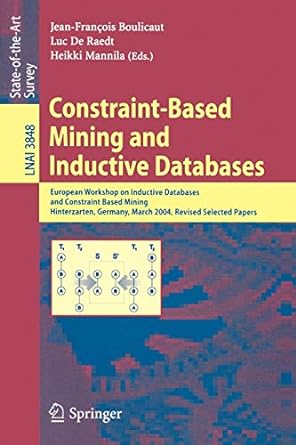Question
Show the output of the following programs. Program 1 public class Test { public static void main( String[] args ){ A a = new A(
Show the output of the following programs.
Program 1
public class Test { public static void main(String[] args){ A a = new A(); a.p(10); a.p(10.0); } } class B { public void p(double i) { System.out.println(i * 2); } } class A extends B { // This method overrides the method in B public void p(double i) { System.out.println(i); } } |
| Program 2
public class Test { public static void main(String[] args){ A a = new A(); a.p(10); a.p(10.0); } } class B { public void p(double i) { System.out.println(i * 2); } } class A extends B { // This method overloads the method in B public void p(int i) { System.out.println(i); } } |
Show the output of the following programs.
public class Faculty extends Employee { public static void main(String[] args) { new Employee(); } public Faculty() { super(); System.out.println("Faculty's no-arg constructor is invoked"); } } class Employee extends Person { public Employee() { super("Invoke Persons overloaded constructor"); System.out.println("Employee's no-arg constructor is invoked"); } } class Person { public Person () { System.out.println("Person's no-arg constructor is invoked"); } public Person (String s) { this(); System.out.println(s);
|
Step by Step Solution
There are 3 Steps involved in it
Step: 1

Get Instant Access to Expert-Tailored Solutions
See step-by-step solutions with expert insights and AI powered tools for academic success
Step: 2

Step: 3

Ace Your Homework with AI
Get the answers you need in no time with our AI-driven, step-by-step assistance
Get Started


